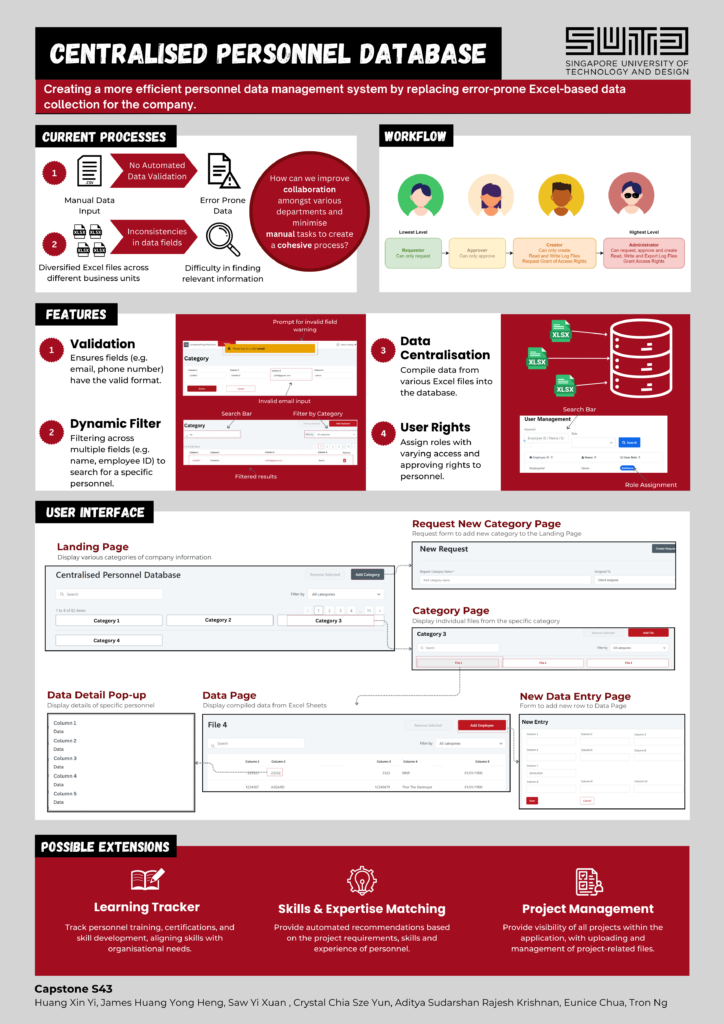What is the Problem?
The current employee database management system relies on multiple Excel sheets,
managed by different process owners, each wielding their own set of varying access rights.
This workflow has resulted in the following issues:


Our solution leverages the power of OutSystems to craft a centralised employee database.
The application features an intuitive landing page that displays categorised Excel files,
enhancing user experience with a powerful search function and easy category management.
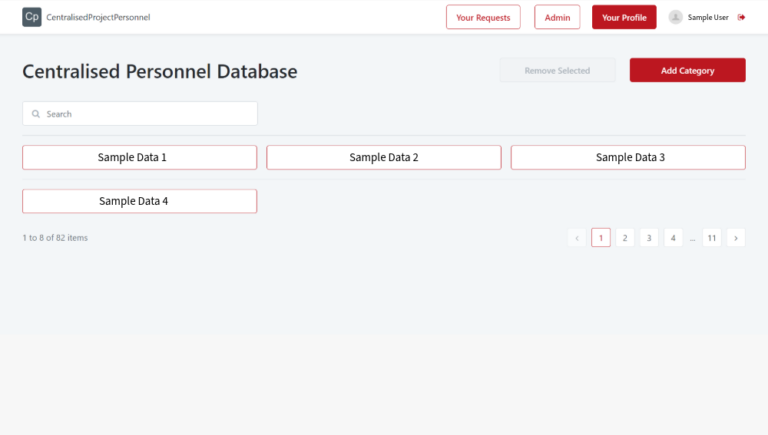
Key Features
Our system revolutionises data management with tailored functionalities,
offering robust tools for effective data access and collaboration.
Below are the key features of the system, each designed to enhance usability and efficiency:
1. Data Centralisation
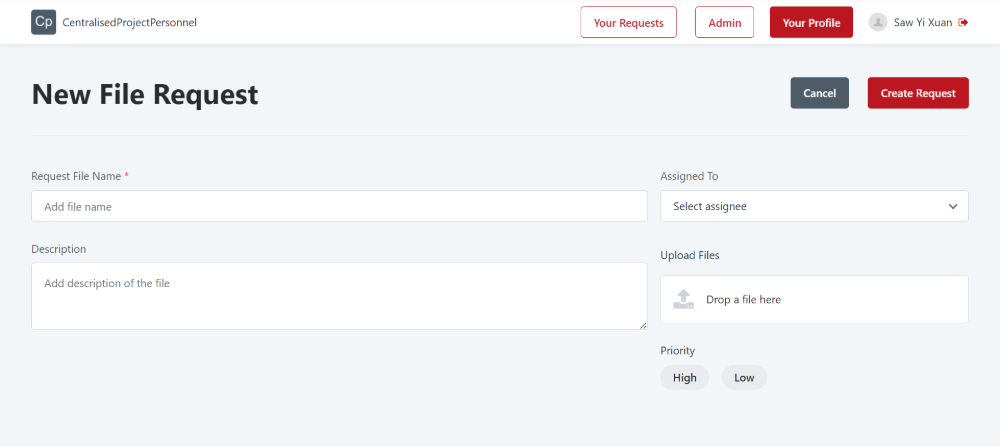
Users have the capability to make a request to import Excel files, and the system will systematically organise the data onto a dedicated page.
The users can:
Add New Categories
Add New Files to a Category
Import Excel Files to be stored
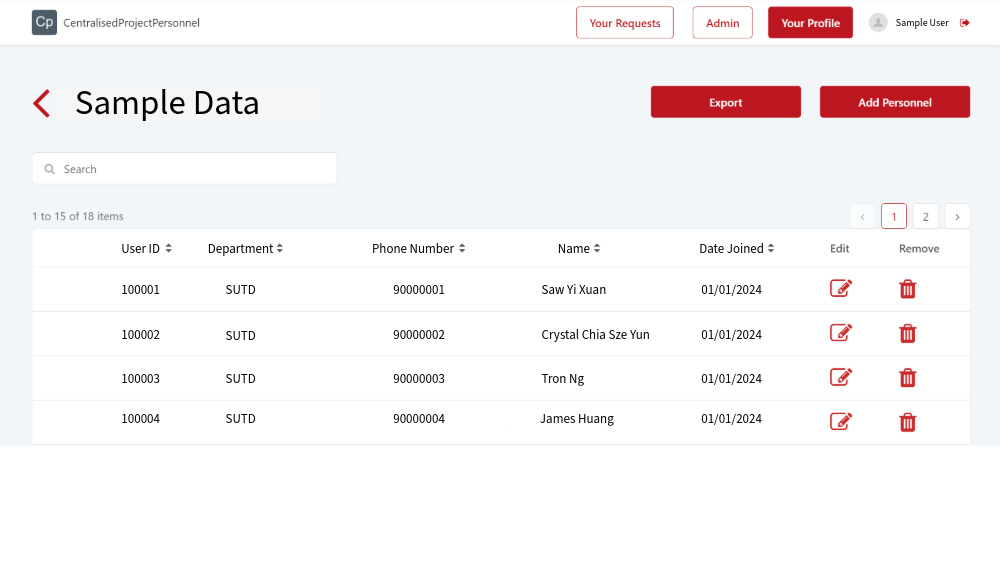
Data from Excel files are stored in the database in a consistent manner that is easily accessible for all departments.
The departments can:
Add Additional Columns of Data
Edit Column Data
Export Excel Files
2. Dynamic Filtering
Dynamic filtering allows users to not only search across one field but across all fields in the table.
The users can:
Search via Search Bar
Filter by various categories
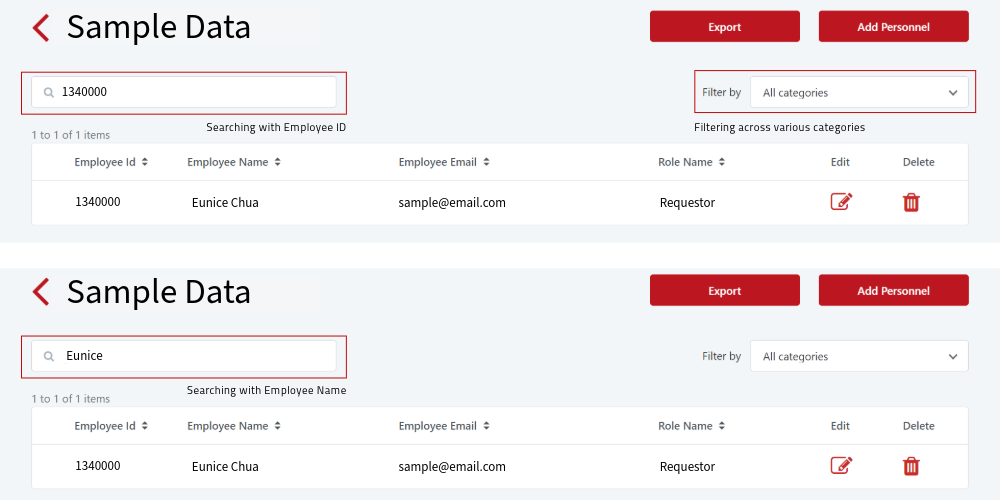
3. User Roles Management
Four Main Roles:

Administrator’s Dashboard
Before making any changes to the data, users who are not administrators must create a request to be approved by the administrators.
Administrators can:
View Requests
Approve Requests
Reject Requests
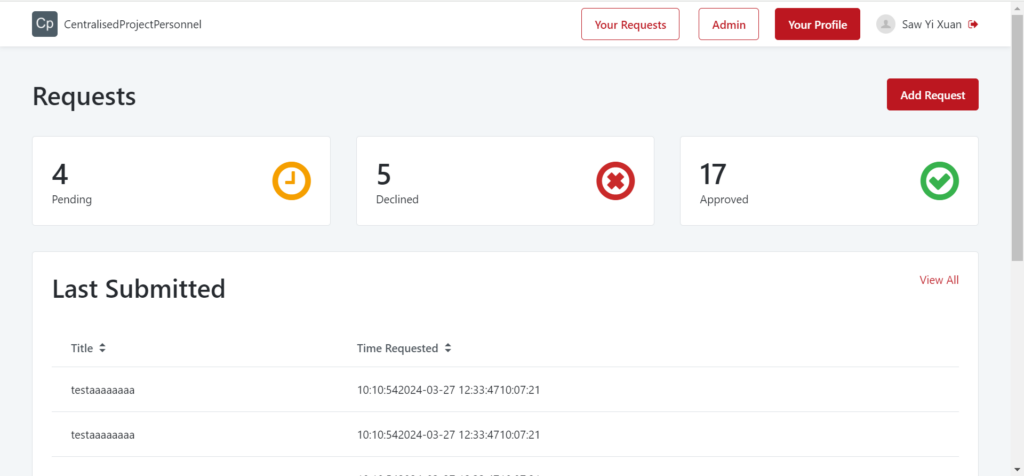
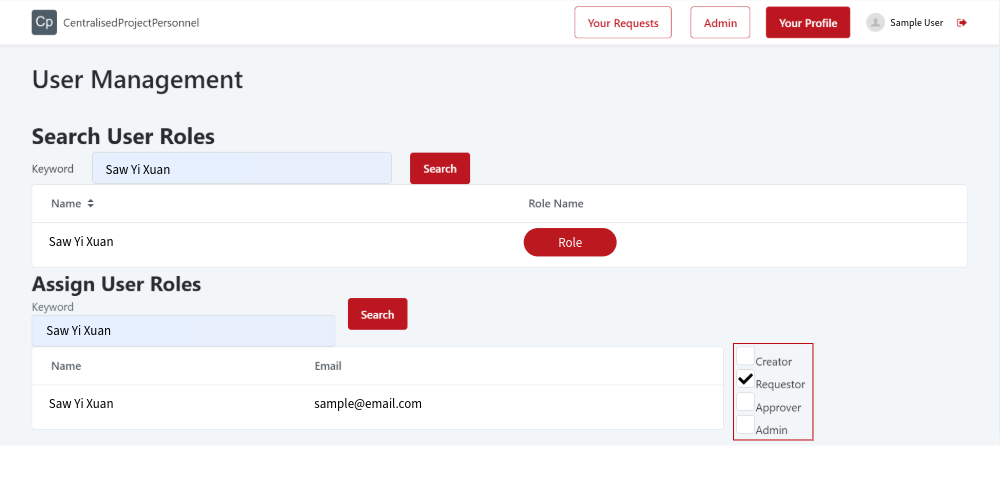
User Roles Management
Different roles have varying access rights.
Administrators can:
Search for a User to check their Roles
Assign Roles to Users
Modify and Remove Roles of Assigned Users
Video
Watch our video for a walkthrough on our user interface.
Poster
The poster shows the overview of the company’s existing workflow. It also illustrates how our methodology
and solution address the limitations present in the current processes.
